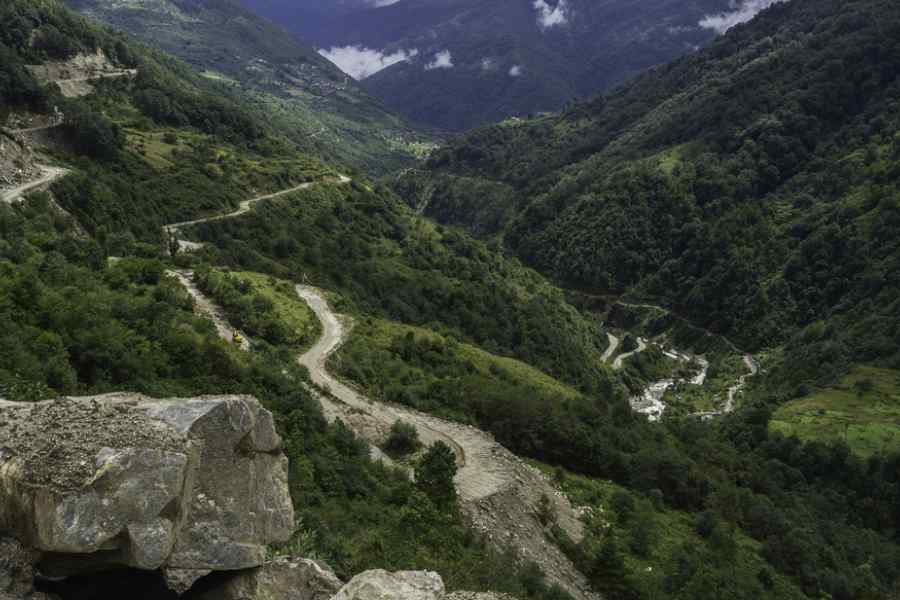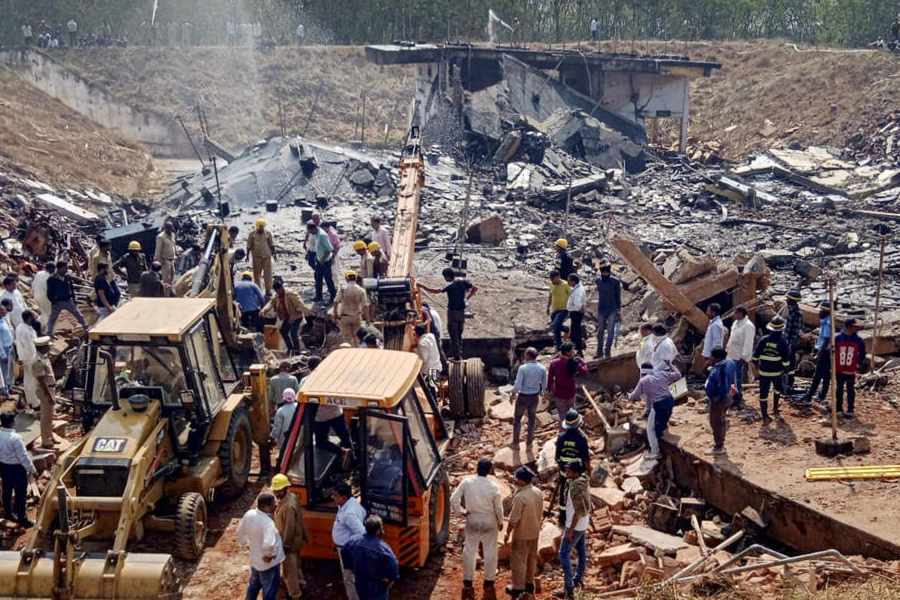India could experience above-normal rainfall in July, with heavy rains potentially leading to floods in the western Himalayan states and river basins in the central parts of the country, the India Meteorological Department (IMD) said on Monday.
The IMD anticipates fewer floods in northeast India amid a prediction of below-normal rainfall in the region.
Addressing a virtual press conference, IMD chief Mrutyunjay Mohapatra said the July rainfall averaged over the country as a whole is most likely to be above normal -- more than 106 per cent of the long-period average (LPA) of 28.04 cm.
"Normal to above-normal rainfall is most likely over most parts of the country, except many parts of northeast India and some parts of northwest, east and southeast peninsular India," he said.
The IMD chief said the prediction of above-normal rainfall "certainly" indicates a higher probability of very heavy rainfall in certain areas.
"Especially, if you look at states like Himachal Pradesh, Uttarakhand and Jammu and Kashmir and the foothills of the western Himalayas, we are expecting above-normal rainfall activity," he said.
"This is the region where you can have devastating impacts in terms of cloudbursts, heavy rainfall leading to landslides, floods, etc. Many rivers also originate here. In central India too, we are expecting above-normal rainfall in Godavari, Mahanadi and other river basins. So the probability of floods there is high," Mohapatra said.
Experts from the International Centre for Integrated Mountain Development (ICIMOD), a Nepal-based intergovernmental organisation, have also warned about a difficult monsoon season for the countries in the Hindukush Himalayan region, including Bangladesh, Bhutan, India, Nepal and Pakistan.
"In spite of the fact that last year saw below-average rainfall in many parts of the HKH countries, catastrophic floods still hit region after region, community after community in the mountains of the Hindukush Himalaya," said Mandira Shrestha, programme coordinator for climate services at the ICIMOD.
"In this context, this year's monsoon outlook is worrying. It is also set against an overall warming trend, which we know is linked to greater melting of snow and glaciers and the loss of permafrost -- the hidden glue that stabilises many mountain slopes and the thawing of which is often a key factor in the sorts of devastating flash floods and landslides we are now seeing across our region," she said.
This forecast is an alert for funders, multilateral agencies and disaster-management officials in governments -- multi-hazard early-warning systems in this heavily-populated region of rising risk must urgently be rolled out, Shrestha said.
The year 2023 saw devastating floods in Himachal Pradesh and Uttarakhand in July and August, and in the Teesta river in the eastern Himalayas in October.
The IMD also said India recorded below-normal rainfall in June, with the deficit standing at 11 per cent, the highest in five years.
Data compiled by the IMD shows in 20 of the 25 years when the June rainfall was below normal (less than 92 per cent of the LPA), the July rainfall was normal (94-106 per cent of the LPA) or above normal.
In 17 of the 25 years when the June rainfall was below normal, the seasonal rainfall was normal or above normal, the data said.
Mohapatra attributed the below-normal rainfall in June to the sluggish advance of monsoon over the northern and eastern parts of the country due to a lack of weather systems.
"Only one low-pressure area developed towards the end of June. Normally, we get three low-pressure systems. The Madden-Julian Oscillation was not favourable and therefore, we could not get enhanced convection and low-pressure systems," he said.
The absence of active western disturbances, mainly during the June 10 to June 19 period, was also a reason for the longer dry spell and heatwave prevailing over northwest and central India.
The weather office said maximum temperatures are likely to be normal to below normal over many parts of northwest India and peninsular India, except the west coast.
"Above-normal maximum temperatures are likely over many parts of central India, east and northeast India and along the west coast," it said.
The minimum temperatures are most likely to be above normal over many parts of the country, except some parts of northwest and the adjoining areas of central India and some pockets of southeastern peninsular India, Mohapatra said.
"We are expecting good monsoon rains in July. Cloudy conditions generally result in higher minimum temperatures," Mohapatra said.
Northwest India recorded its warmest June last month since 1901, with a mean temperature of 31.73 degrees Celsius, the IMD said on Monday.
The monthly average maximum temperature in the region settled at 38.02 degrees Celsius, 1.96 degrees Celsius above normal. The average minimum temperature stood at 25.44 degrees Celsius, 1.35 degrees Celsius above normal, according to the IMD's data.
Northwest India recorded a mean temperature of 31.73 degrees Celsius in June, 1.65 degrees Celsius above normal and the highest since 1901, the IMD chief said.
Except for the headline, this story has not been edited by The Telegraph Online staff and has been published from a syndicated feed.











